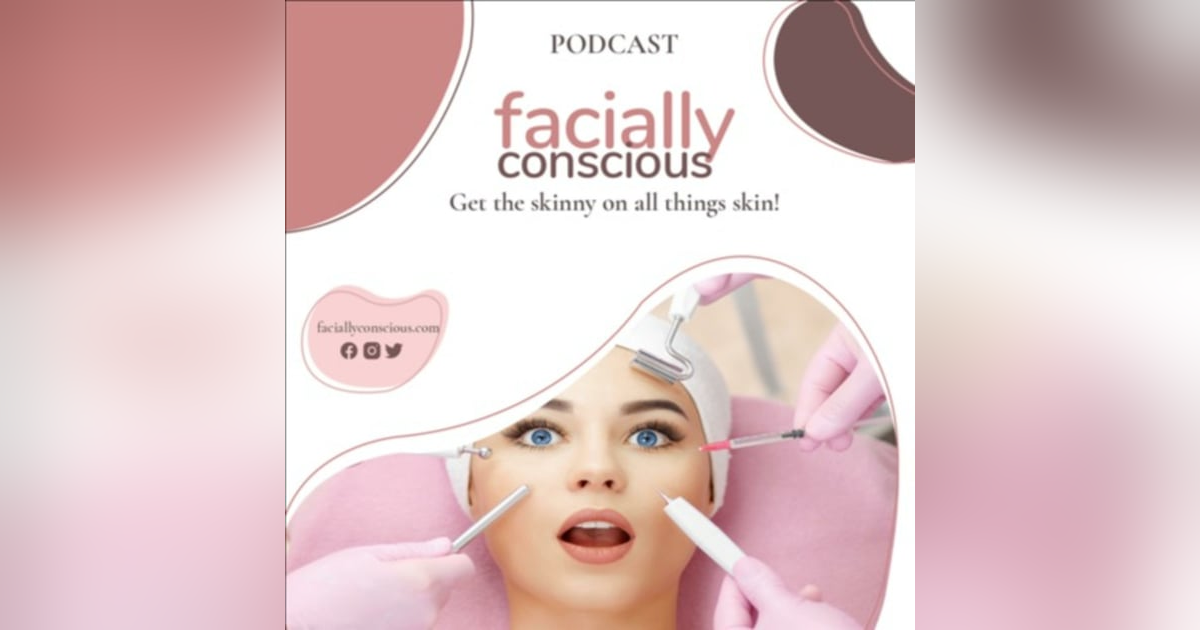The Great Beef Tallow Debate: Why This Ancient Remedy Might Be Doing More Harm Than Good to Your Skin

As featured on the Facially Conscious Podcast - listen to the full episode here
If you've been scrolling through social media lately, you've probably seen the buzz about beef tallow skincare. Everyone seems to be applying this rendered cow fat on their faces, from TikTok influencers to wellness gurus, claiming it's the ultimate natural moisturizer. But as an esthetician who has been treating clients for years, I need to share what I'm actually observing in my treatment room – and it's not pretty.
On our latest episode of Facially Conscious, “The Great Beef Tallow Debate: Ancient Remedy or Modern Fad?” my co-host, Rebecca Gadberry, our resident cosmetic chemist and UCLA instructor, and I delved into the beef tallow phenomenon. What we discovered might surprise you, especially if you're considering joining this trend.
The Appeal of Going "Ancestral"
I understand. There's something profoundly appealing about returning to what our ancestors used. In a world filled with unpronounceable ingredient lists and synthetic-sounding chemicals, beef tallow feels refreshingly simple. It's just beef fat, right? How complicated can it be?
This movement towards ancestral skincare practices is part of a larger wellness trend that has been gaining traction. People are becoming increasingly skeptical of modern formulations, choosing ingredients they can recognize and understand. Coupled with the sustainability aspect—utilizing the whole animal to minimize waste—beef tallow starts to seem quite compelling.
But here's where things get tricky. Just because our ancestors used something doesn't necessarily mean it's the best choice for our skin today. There's a reason we moved away from these practices, and it's not just because of marketing or corporate greed.
The Science Behind Why Beef Tallow Fails Your Skin
To understand why beef tallow is problematic, we need to discuss how your skin actually functions. Until 1979, we didn't even realize the skin had a barrier function. Before that discovery, moisturizing focused on creating an occlusive layer on top of the skin – essentially gluing down those peeling, dry skin cells like shingles on a roof.
But modern skincare science has revealed something much more sophisticated. Your skin's barrier, known as the stratum corneum, resembles a brick-and-mortar wall. The "bricks" are dead skin cells, and the "mortar" is a precise mixture of lipids—fats that your skin produces naturally. When this barrier is damaged, it can lead to dry skin, irritation, and a host of other problems.
The key to healthy skin isn't about mimicking sebum (your skin's natural oil) or creating an occlusive barrier; it's about repairing and maintaining that delicate lipid balance in your skin's barrier. This requires specific ratios: approximately 50% ceramides, 25% cholesterol, 10-15% free fatty acids, and 3-4% omega fatty acids.
Here's where beef tallow becomes problematic. It contains high levels of stearic acid, a fatty acid that initially makes your skin feel incredibly soft. However, after a few weeks of use, this excess stearic acid disrupts your skin's natural lipid balance, actually making your skin drier than before. Consequently, you end up needing more and more product, creating a vicious cycle of dependence.
What I'm Seeing in My Treatment Room
As an esthetician, I've been treating clients who have used beef tallow for weeks or months, and the results are consistent and concerning. During steaming treatments, I notice a distinct, musky animal scent coming from their skin.
These clients consistently show more clogged pores than usual, accompanied by tight, dry, and flaking skin. The very issues they sought to address with beef tallow have actually worsened. This mirrors what I observed years ago during the coconut oil craze when clients used pure coconut oil as a moisturizer, leading to similarly disappointing results.
The most frustrating part is that, since these adverse effects take weeks to develop, clients often fail to connect them to their new skincare routine. They tend to blame their cleanser, the weather, stress, or anything else before considering that their "natural" moisturizer might be the culprit.
The Comedogenic Reality
One of the biggest myths spread by beef tallow advocates is that it doesn't clog pores because it's "similar to sebum." This reasoning is fundamentally flawed. Sebum is produced by your oil glands and serves a completely different function than barrier lipids. If beef tallow is similar to sebum, then by definition, it is comedogenic—meaning it clogs pores.
I've witnessed this firsthand with clients who have acne. Some have been told that beef tallow is actually beneficial for acne-prone skin, which is completely unsupported by any scientific evidence. In fact, it's quite the opposite. The occlusive nature of beef tallow, coupled with its pore-clogging properties, makes it especially problematic for anyone dealing with breakouts.
The Missing Science
Here's something that might shock you: virtually no scientific studies support beef tallow as a skincare ingredient. The existing research focuses on stearic acid in isolation, and recent studies indicate that high concentrations of stearic acid actually disrupt the skin barrier, which is precisely what we don't want in a moisturizer.
Compare this to modern barrier repair ingredients like ceramides, which have been extensively studied and shown to improve skin health over time. Decades of research demonstrate how these ingredients work together to repair and maintain healthy skin function.
A Better Path Forward
If you're drawn to the idea of simple, effective skincare, I understand the appeal. However, instead of reaching for beef tallow, consider collaborating with a skincare professional who can direct you toward products that enhance your skin's health. Seek formulations that contain the appropriate ratios of barrier lipids – ceramides, cholesterol, and carefully balanced fatty acids.
Modern barrier repair moisturizers don't merely sit on the surface of your skin, providing a temporary solution. They engage with your skin's natural processes to restore healthy function. Over time, you'll notice that you need less product, not more, as your skin grows healthier and more resilient.
The Bottom Line
The trend of beef tallow exemplifies why we can't judge skincare products solely by their initial feel or historical use. What feels good in the moment isn't always the best for your skin in the long run. As skincare professionals, we have a responsibility to look beyond marketing claims and social media hype to understand what the science actually tells us.
Your skin deserves better than a trend that will likely fade in six months, resulting in clogged pores and compromised barriers. Instead of looking back to ancestral practices, let's embrace the remarkable advancements in skincare science that enable us to truly understand and support our skin's health.
If you're currently using beef tallow and experiencing any of the issues I've described, don't panic. Your skin can recover. Collaborate with a qualified esthetician to transition to products that will support your skin's barrier function, and allow your skin time to rebalance itself.
Remember, newer isn't always better when it comes to skincare – but in this case, the science is clear. Modern barrier repair formulations are simply more effective, safer, and better for your skin's long-term health than applying animal fat to your face.
Listen to the full discussion in our podcast episode "The Great Beef Tallow Debate: Ancient Remedy or Modern Fad?" for more insights from cosmetic chemist Rebecca Gadberry and additional tips for choosing the right moisturizer for your skin type.
To read more from Trina Reneá, join her on Substack.








